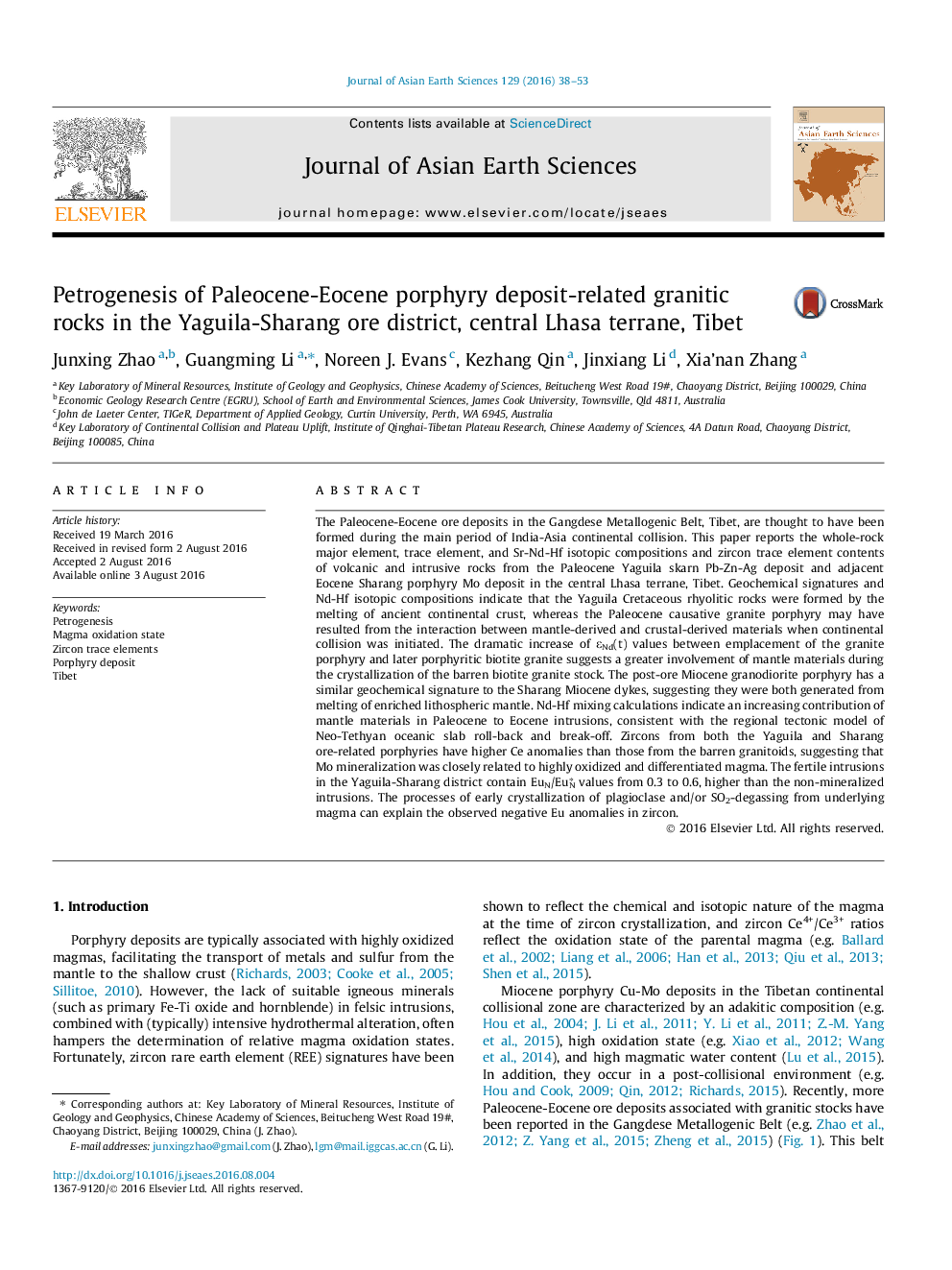| کد مقاله | کد نشریه | سال انتشار | مقاله انگلیسی | نسخه تمام متن |
|---|---|---|---|---|
| 4729935 | 1640342 | 2016 | 16 صفحه PDF | دانلود رایگان |
• Cretaceous rhyolites were formed by the melting of ancient continental crust.
• There was a higher mantle flux into the source of magmatism from Paleocene to Eocene.
• Miocene granodioritic dykes were originated from the enriched lithospheric mantle.
• Mo mineralization is closely related to highly oxidized and differentiated magma.
The Paleocene-Eocene ore deposits in the Gangdese Metallogenic Belt, Tibet, are thought to have been formed during the main period of India-Asia continental collision. This paper reports the whole-rock major element, trace element, and Sr-Nd-Hf isotopic compositions and zircon trace element contents of volcanic and intrusive rocks from the Paleocene Yaguila skarn Pb-Zn-Ag deposit and adjacent Eocene Sharang porphyry Mo deposit in the central Lhasa terrane, Tibet. Geochemical signatures and Nd-Hf isotopic compositions indicate that the Yaguila Cretaceous rhyolitic rocks were formed by the melting of ancient continental crust, whereas the Paleocene causative granite porphyry may have resulted from the interaction between mantle-derived and crustal-derived materials when continental collision was initiated. The dramatic increase of εNd(t) values between emplacement of the granite porphyry and later porphyritic biotite granite suggests a greater involvement of mantle materials during the crystallization of the barren biotite granite stock. The post-ore Miocene granodiorite porphyry has a similar geochemical signature to the Sharang Miocene dykes, suggesting they were both generated from melting of enriched lithospheric mantle. Nd-Hf mixing calculations indicate an increasing contribution of mantle materials in Paleocene to Eocene intrusions, consistent with the regional tectonic model of Neo-Tethyan oceanic slab roll-back and break-off. Zircons from both the Yaguila and Sharang ore-related porphyries have higher Ce anomalies than those from the barren granitoids, suggesting that Mo mineralization was closely related to highly oxidized and differentiated magma. The fertile intrusions in the Yaguila-Sharang district contain EuN/EuN∗ values from 0.3 to 0.6, higher than the non-mineralized intrusions. The processes of early crystallization of plagioclase and/or SO2-degassing from underlying magma can explain the observed negative Eu anomalies in zircon.
Journal: Journal of Asian Earth Sciences - Volume 129, 1 November 2016, Pages 38–53
